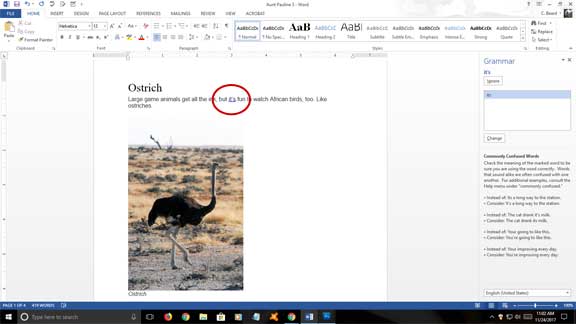A relative who doesn’t own a computer asked to see photos from my trip to Africa. I’ve been pasting my blog posts into Word, printing, and mailing them. When I did that today, though, something unexpected happened.

In this screenshot, Word has flagged my (very correct!) use of “it’s” and has suggested, “Check the meaning of the marked word to be sure you are using the word correctly. Words that sound alike are often confused with one another.” Word included this example:
- • Instead of: The cat drank it’s milk.
- • Consider: The cat drank its milk.
I’m not going to touch Microsoft’s inventive use of punctuation and sentence structure there. And I understand that Word isn’t saying my writing is wrong – Word is encouraging me to double check my writing. Ordinarily I would be in favor of that. But there are a couple of problems.
First, there’s only one example for “it’s” and “its,” which means uncertain writers never see how to use “it’s” correctly.
Second, I have worked with classrooms full of students who don’t consider that their very expensive applications could mislead them. If Word flags something in their writing, the students assume it’s incorrect, change it, and move on. The implications for that kind of thinking (“the device is always right”) are frightening.
So I hope that teachers and parents are encouraging students to question the authority of the device.
And I return to my original plaint: why can’t Word tell the difference between “it’s” and “its” with greater accuracy?

